The meadow beauty is one of those flowers that, when I first saw it, I had to grow it. I’m also really surprised that it isn’t more commonly sold in the trade, especially with the demand for rain garden plants.
meadow beauty loves wet sandy soil
If you have a sandy/gravelly streambank that seems to only grow jewelweed and not much else, try this plant. They like growing in wet silty/sandy locations that you wouldn’t think would support much else. Rain gardens, seepages and soggy spots in the yard are also great choices. Thanks to its thick rhizome that likes to grow in weird, funky shapes, it lodges itself between the pebbles. They will also continue to spread from this rhizome, producing new ones along its fibrous roots.
meadow beauty is to jewelweed as asters are to goldenrods
Anywhere you have jewelweed volunteering and growing wild, I think this would do really well. This appears to have a similar visual effect as asters and goldenrods. This blooms around the same time as jewelweed, for around the same length of time. The golden orange color of the jewelweed is a complimentary color to the bluish-hot-pink of the meadow beauty flowers. They also love the same site conditions.
I wonder if jewelweed ever manages to launch a seed into one of meadow beauty’s pitchers…
not drought tolerant, but drought-adapted
I grew a bunch of meadow beauties from seed in 2024 and, once big enough, bumped them up to cell flats and pots. They grew for a short while until we got hit with the drought, at which point they all died back. I thought I’d killed them, but I left the flats alone until fall. They didn’t get watered except what little they got when I was watering plants nearby.
When I went to “deadpot” all the plants I thought died during the drought, I found that they’d all survived. Not only did they survive, they had large, thick, fleshy rhizomes with living buds. They were not dead at all! I found well over 100 plants, about half of which I planted out in my yard. The rest I put in a bucket of soil to overwinter in my kiddie sandbox where I keep dormant bare-root plants protected. The second image is after I’d grabbed the bucket to pot up the rhizomes, which were already waking up.
It’s because of this that I would mark them as drought-adapted. I don’t think they could handle many years of that back-to-back. However, a year of drought as bad as last year’s will not harm them.
“The scarlet leaves and stem of the rhexia, some time out of flower, make almost as bright a patch in the meadow now as the flowers did. Its seed vessels are perfect little cream pitchers of graceful form.” – Thoreau
winter interest
The third image shows you one of the calyxes inset over an image of a field of rhexia showing both flowers and calyxes present. I love an attractive seed pod. The actual seed capsule is contained inside of this little cream pitcher, which persists through the winter months. One source suggested that beneficial insects may utilize these little pitchers as shelter through winter. I don’t know why, but that sounds adorable, like something out of Botanicula if you like little puzzle video games. If you don’t, you may still like this one. it’s about a group of anthropomorphized seed friends trying to avoid getting eaten by insects.
Another source I was reading mentioned that the calyxes are slightly sticky. This may be a way to assist in seed dispersal. Any animals passing through may end up with these vessels latching on, spilling its contents as the animal moves to other locations.
benefit to habitat and food plots
There’s no one list of preferred foods for deer despite my attempts at searching for one. However, this one seems to be a favorite of white tailed deer. If you’re working on a food plot on private hunting grounds, you may consider growing a few of these for seed. You can then collect the seed and scatter in any wet meadow locations on the hunting site. If I were managing a native habitat, I would likely first focus on seed beds closer to home for seed production. This way I could reduce costs of reseeding area until established.
For those of us who are gardeners, not hunters, you’ll want to protect this from herbivory.
As far as other habitat benefits, there is one caterpillar called the large lace border (Scopula limboundata) that hosts on meadow beauty. Earlier I mentioned that beneficial insects may overwinter in the calyxes. This is buzz-pollinated by bumblebees, which is why I added this to my Give Me A Buzz MagiK Picks category. The meadow beauty is also reported to attract butterflies, moths, and other pollinators. It is not a keystone species, but a keystone supporting species.
the plants in my nursery
All of my Rhexia virginica are potted in 4″ deep pots. The vast majority of the pots have a single thick rhizome. A handful of them have 3-4 smaller rhizomes that had split off from the larger ones. I didn’t mark them separately, so I don’t know which is which, but either way you should have an equally abundant number of plants. Since the smaller rhizomes came from various larger ones, a single pot may contain multiple genetically diverse plants. Since these were grown from seed last year, they are all 2nd year plants.

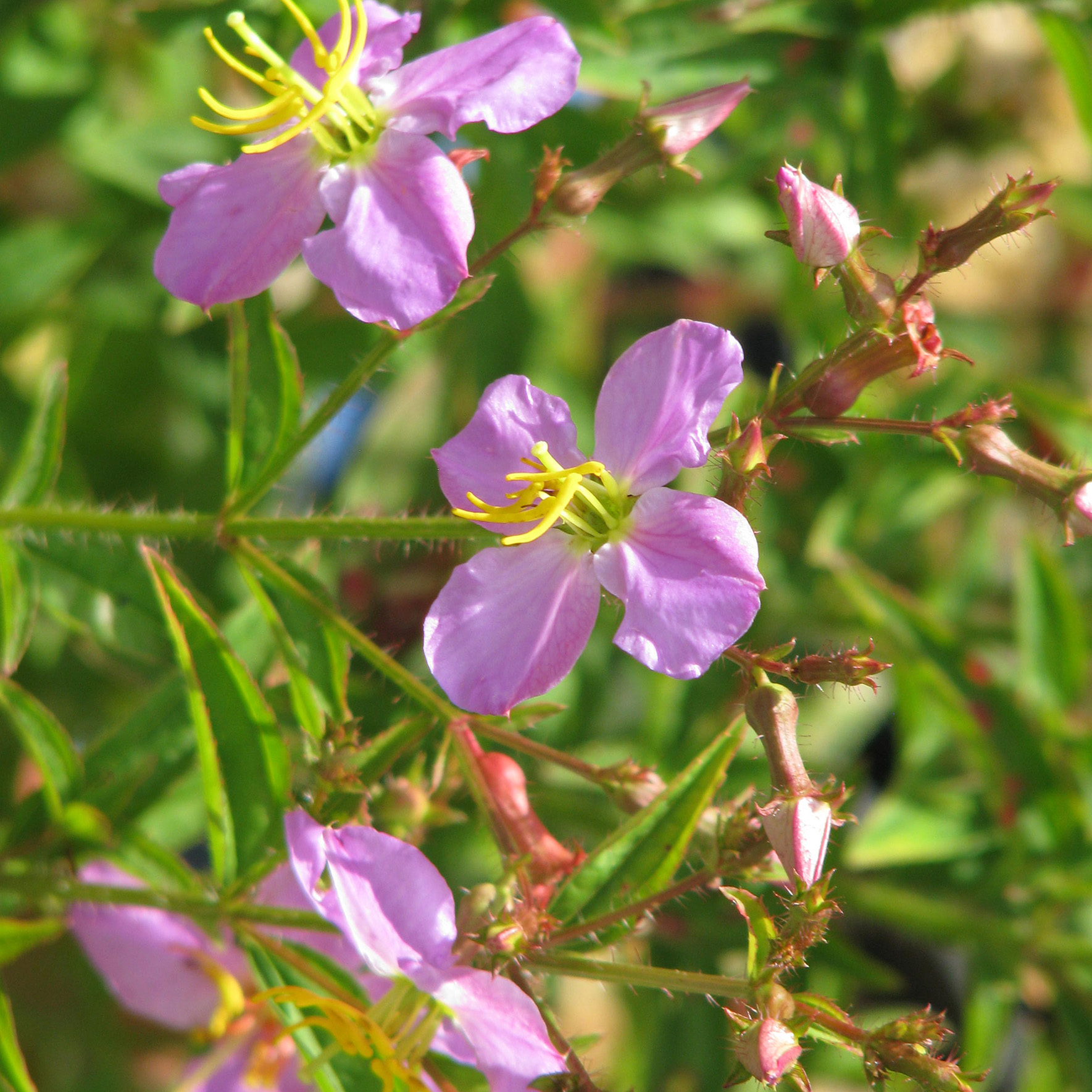
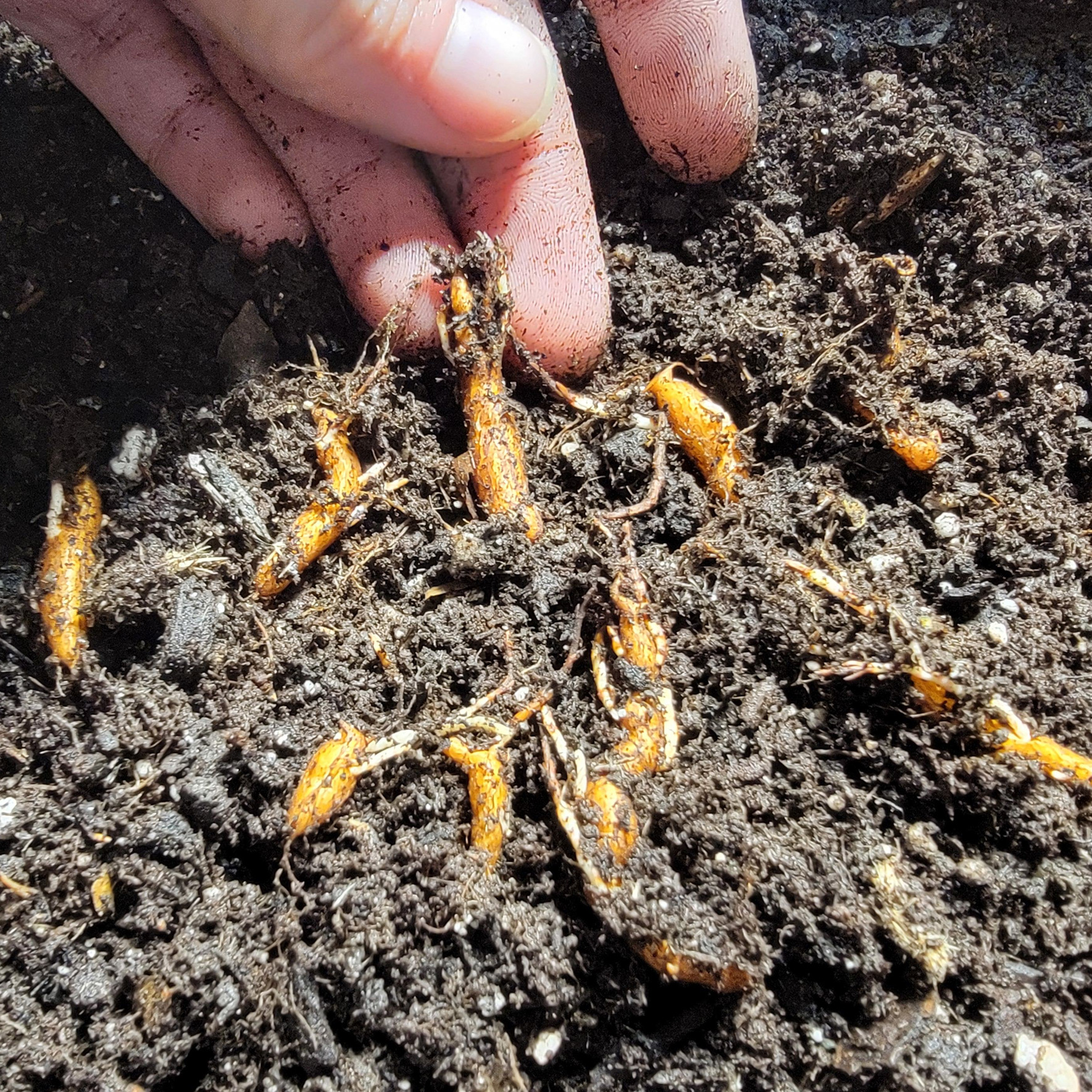
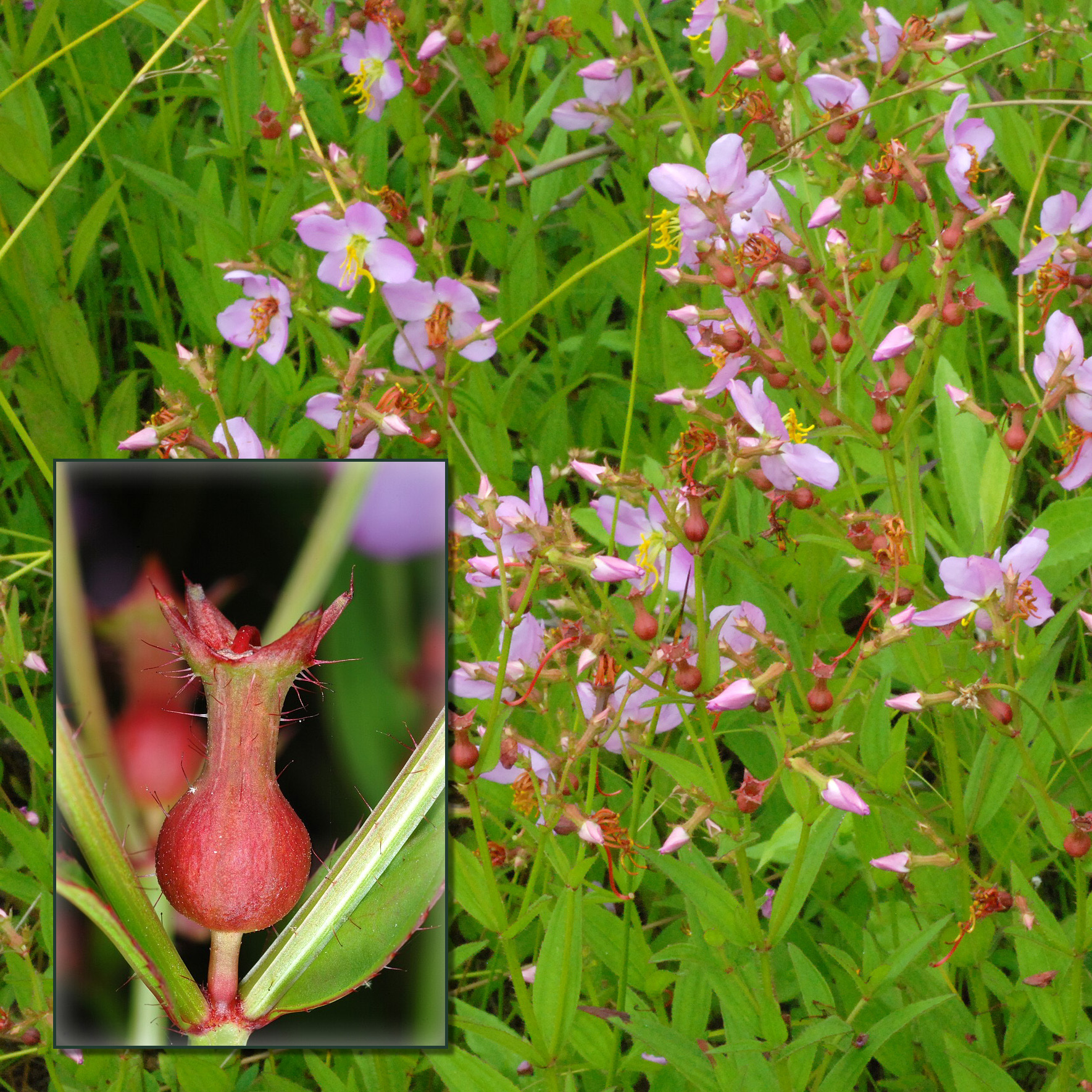

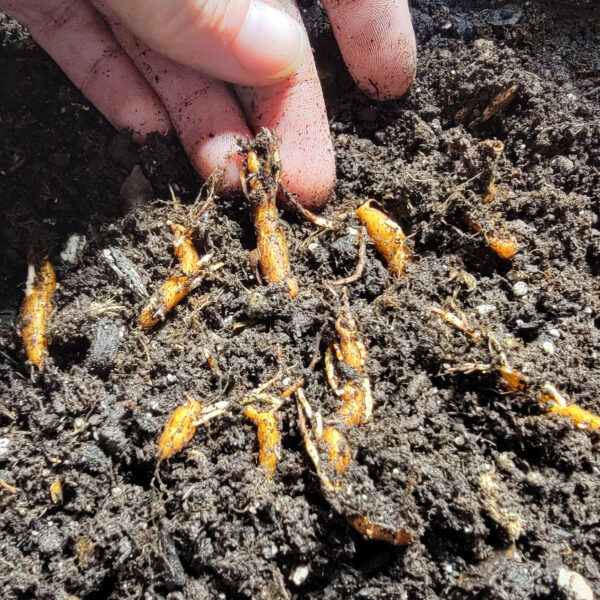
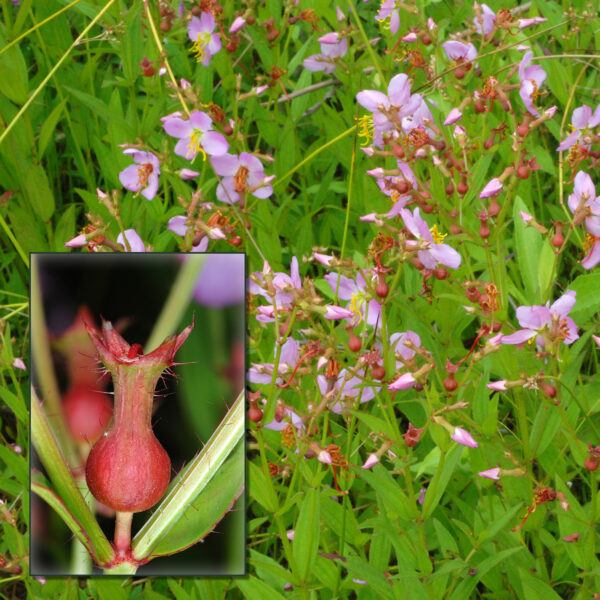








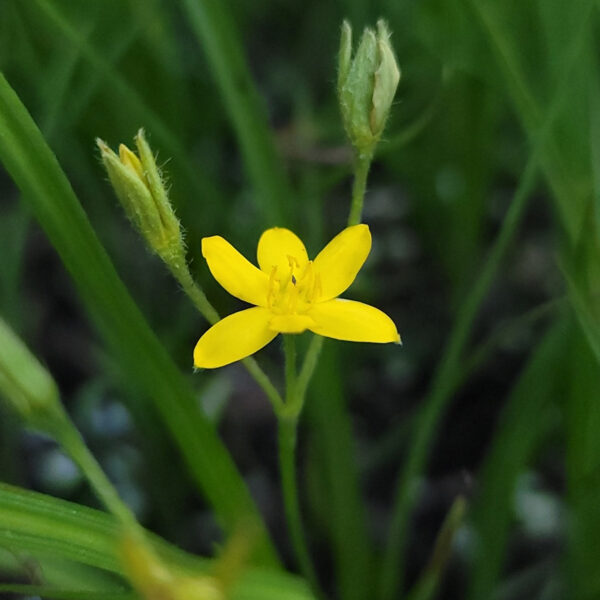



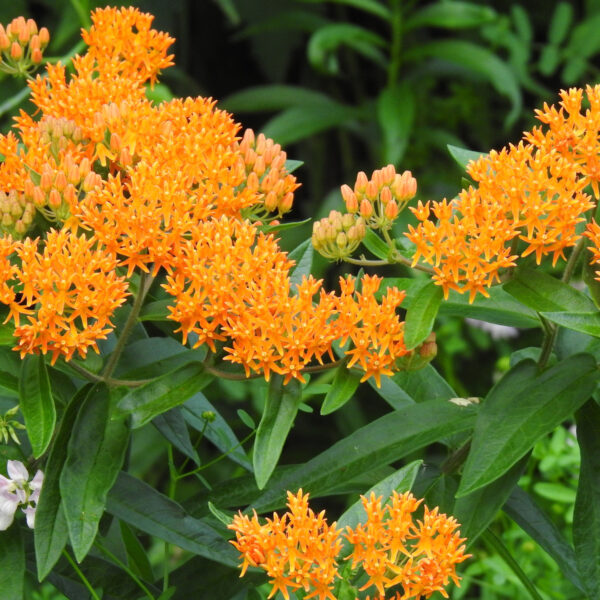

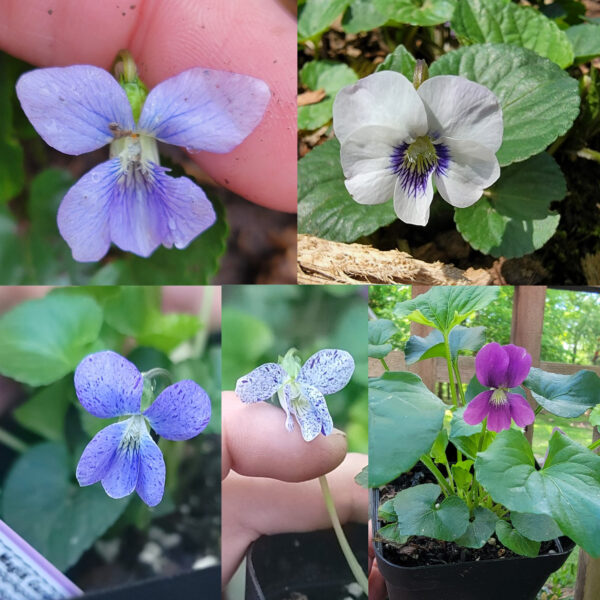
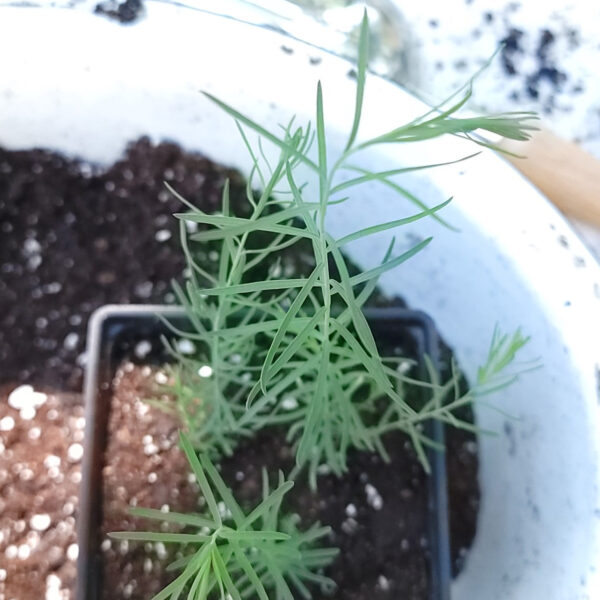



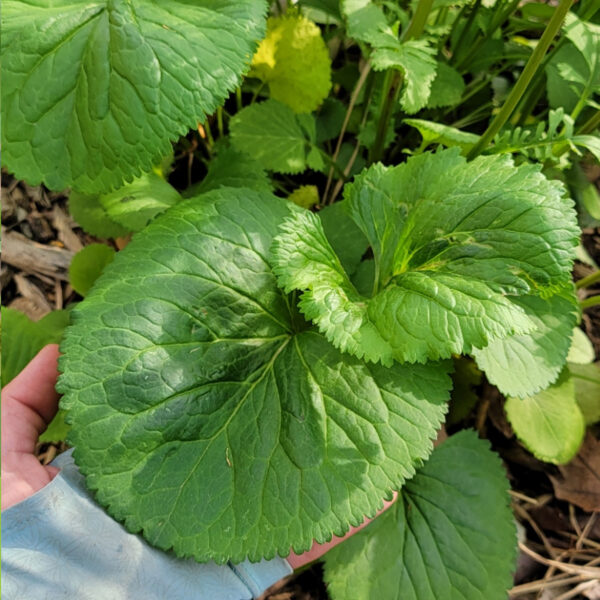

Reviews
There are no reviews yet.